Channel#
Overview
Use this training module to build an urban drainage channel by digitizing the channel components. Finish it up by adding tide gates and boundary conditions to the channel.
Required Data
All data is provided in the Lesson folders.
File |
Content |
|---|---|
*.shp |
Left bank template |
*.shp |
Right bank template |
*.shp |
Cross sections template |
*.shp |
Points |
*.txt |
Tide gate tables |
Data Location: \Coastal 2D Training\Project Data\Channel
Step 1: Prepare the map#
Use Quick Map Services to load an aerial image onto the map.


Make sure the Elevation Raster layer is checked on and if necessary change symbology to Hillshade.
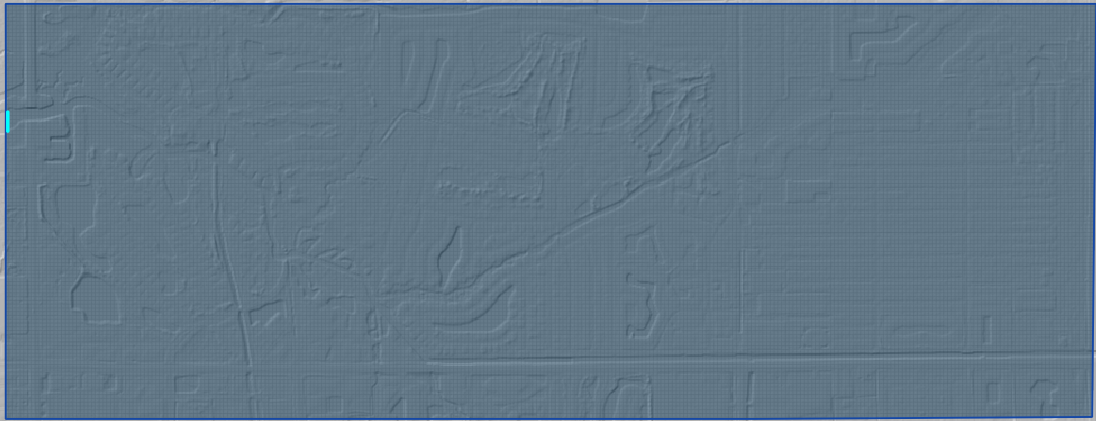
Simplify the layers list by collapsing unused groups and unchecking schematic layers.
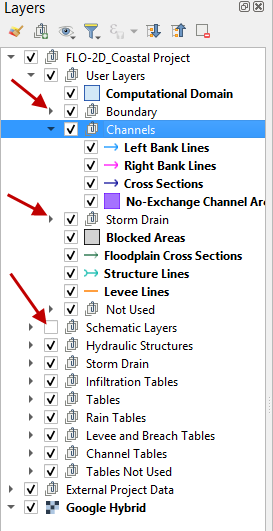
Important
The aerial image and LiDAR map help define the left and right bank lines and help determine where cross sections are required. Sometimes the LiDAR map is better and other times the Aerial is better. Use both to help determine the best placement.
Step 2: Load the data#
Important
The imported data is used as templates to move the class along and reduce errors. These templates are not needed in general. The channels can be built directly into the User Channel Layers.
Click the Channel group in the User Layers.
Drag the channel template shapefiles onto the map.
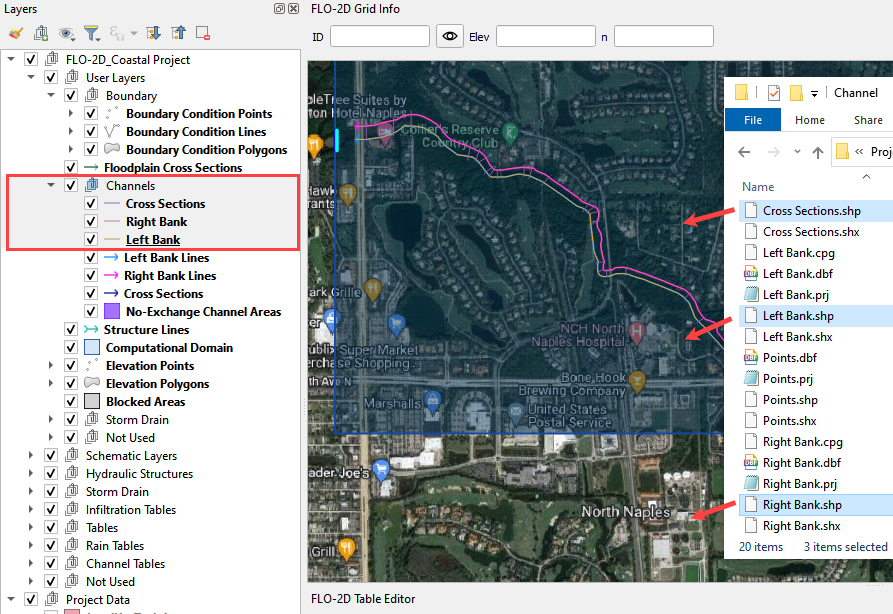
Step 3: Left bank digitize#
Important
Normally to digitize a channel, you would select the Left Bank Lines layer and add a channel feature to it. That process is too slow and complex for this class. We will use a simplified method to reduce errors and time. The following animation shows the full process. Open it in a new tab to study the method.

Please proceed with a faster method to keep on schedule.
Click the Left Bank Template layer. It will be copied into the official layer.
Select the channel line using the select with rectangle button. Drag a rectangle over the channel lines to select the line.
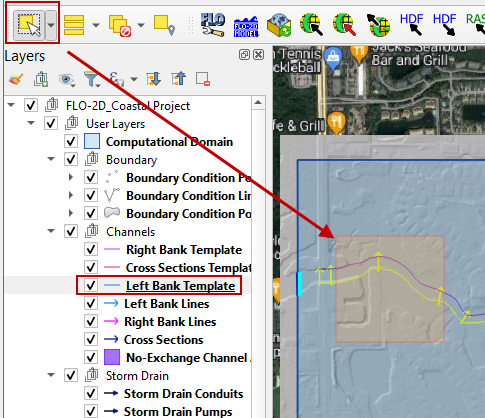
Ctrl-c to copy the line feature.
Click the official Left Bank Lines layer.
Click the Edit Pencil button and Ctrl-v to paste the line into the Left Bank Lines layer.
Save the Left Bank Lines layer and un-toggle the Editor Pencil.
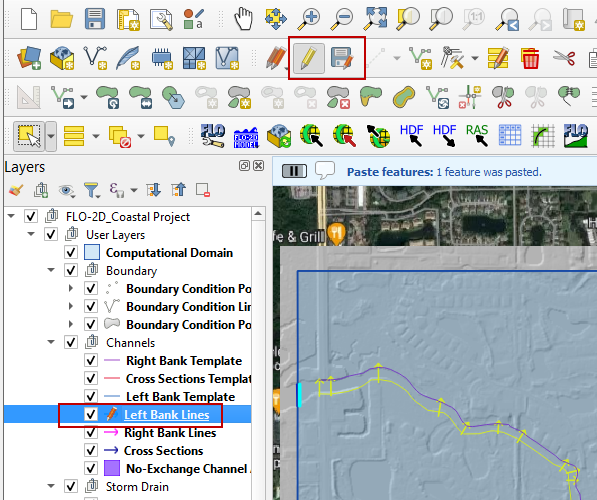
Click the de-select all button to reset the select tool.
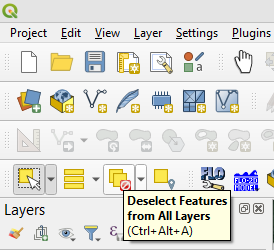
Watch the animated image for a demo.

Important
Remember, this copy paste method is used to keep the class on schedule. In your future projects, you can add a feature to the Left Bank layer instead of using the copy paste method. The Advanced Channel Lesson on the left sidebar shows a more detailed explanation of channel development.
Step 4: Right bank digitize#
Important
Normally, you would build a right bank line just like a left bank line. Again, that process will slow the class down too much. It is demonstrated in the following animation but please follow the simpler steps below. Open it in a new tab to study the method.

Please proceed with a faster method to keep on schedule.
Click the Right Bank Template layer. It will be copied into the official layer.
Select the channel line using the Select button. Drag a rectangle over the channel lines to select the line.
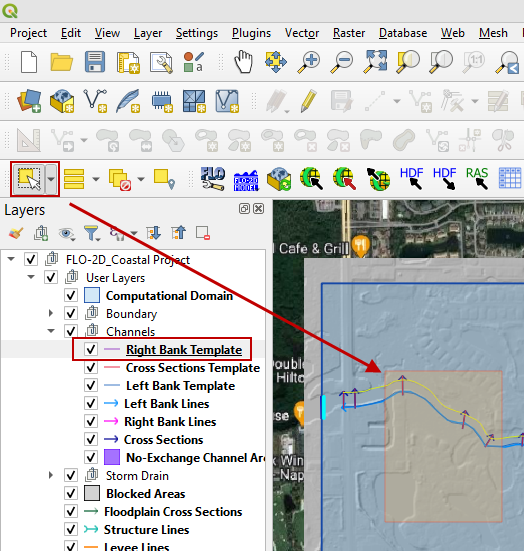
Ctrl-C to copy the line.
Click the official Right Bank Lines.
Click the Edit button and Ctrl-v to paste the line into the Right Bank Lines layer.
Save the Right Bank Lines layer and un-toggle the Editor Pencil.
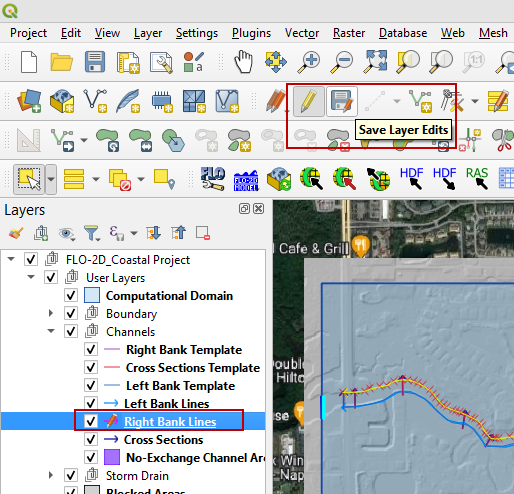
Watch the animation to see the process.
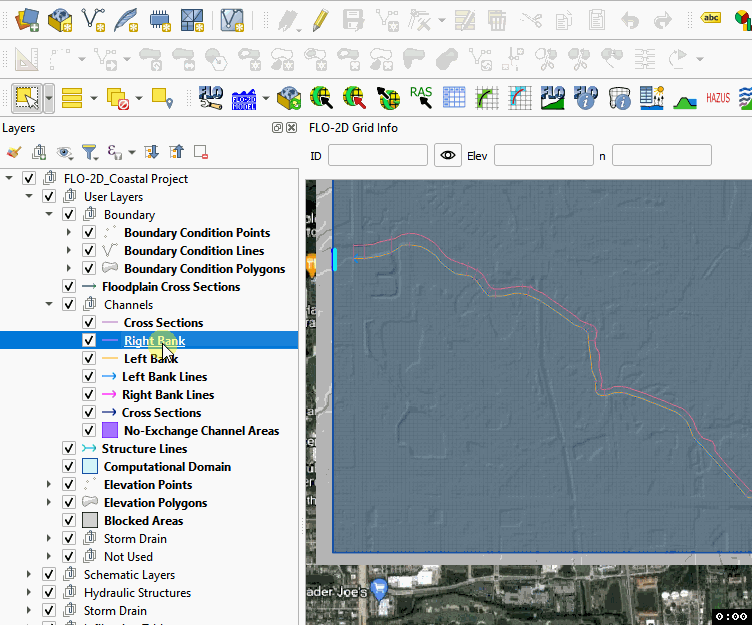
De-select all features and uncheck the left and right bank templates.
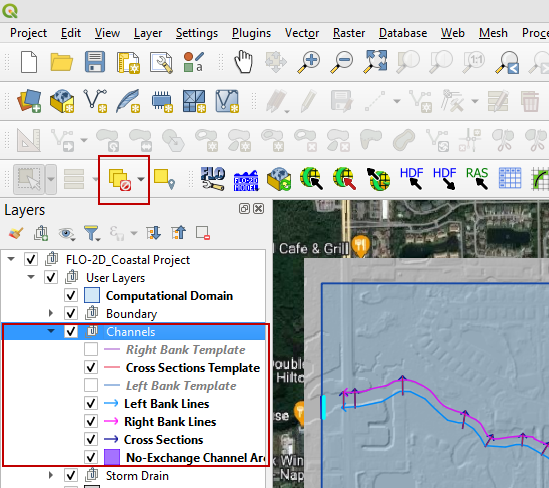
Step 5: Cross sections - fast method#
Important
Cross section editing takes time. Step 5 fast method is used for this class. Step 5 digitize method is to illustrate the process for your own projects.
Collapse the FLO-2D widgets.
Open the Cross Section Editor widget.
Click the Digitize Cross Sections button.
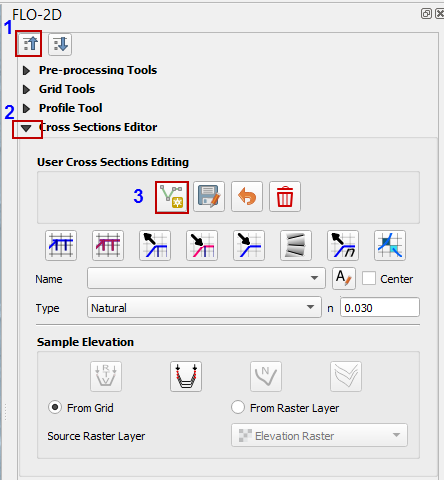
Click the Cross Sections Template layer.
Click the Select All features button.
Ctrl-c to copy all of the cross sections.
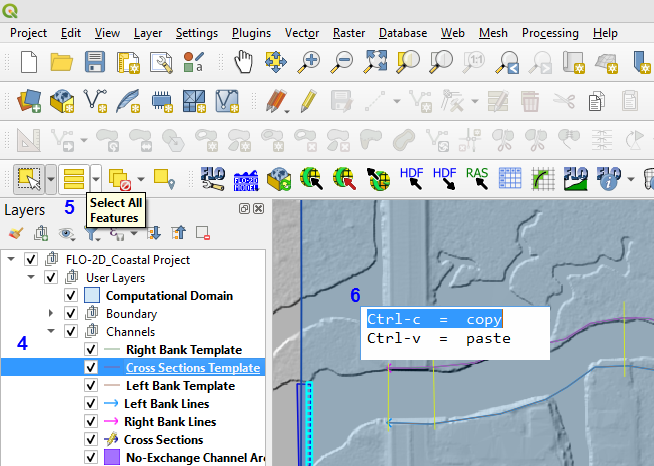
Click the Cross Sections layer.
Ctrl-v to paste the cross section lines into the layer.

Click the Save button on the Cross Section Editor widget.
Note the cross sections loaded into the widget.
De-select all of the features.

Watch the animation to see the process.

Step 5: Cross sections - digitize method#
Important
This is the method you would use to create cross sections on your own channel. It has more details and instructions. Review it but please use the fast method for the live class.
Note
Digitize the cross sections in order from upstream to downstream.
Zoom in on the southeast corner of the map.
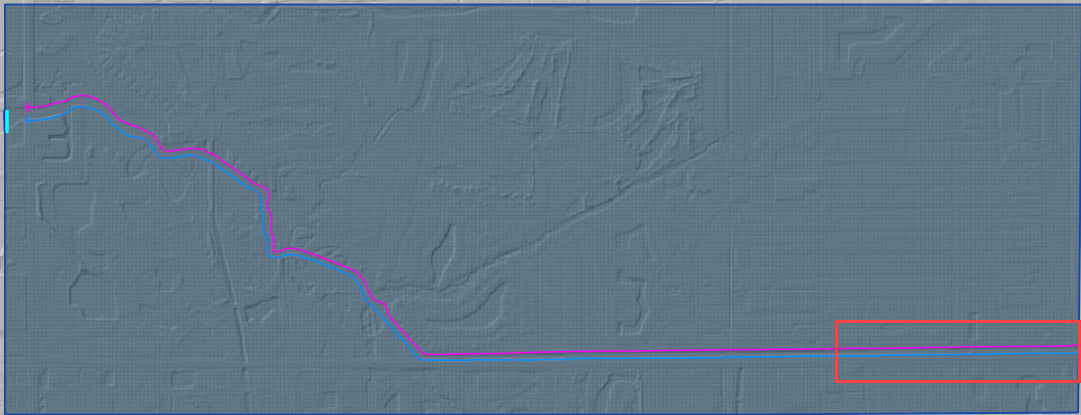
Un-check the Grid layer in the Schematized Layers Group. If the Schematized group is un-checked, skip this.

Go to the Channels group and double click the Cross Sections Template layer.
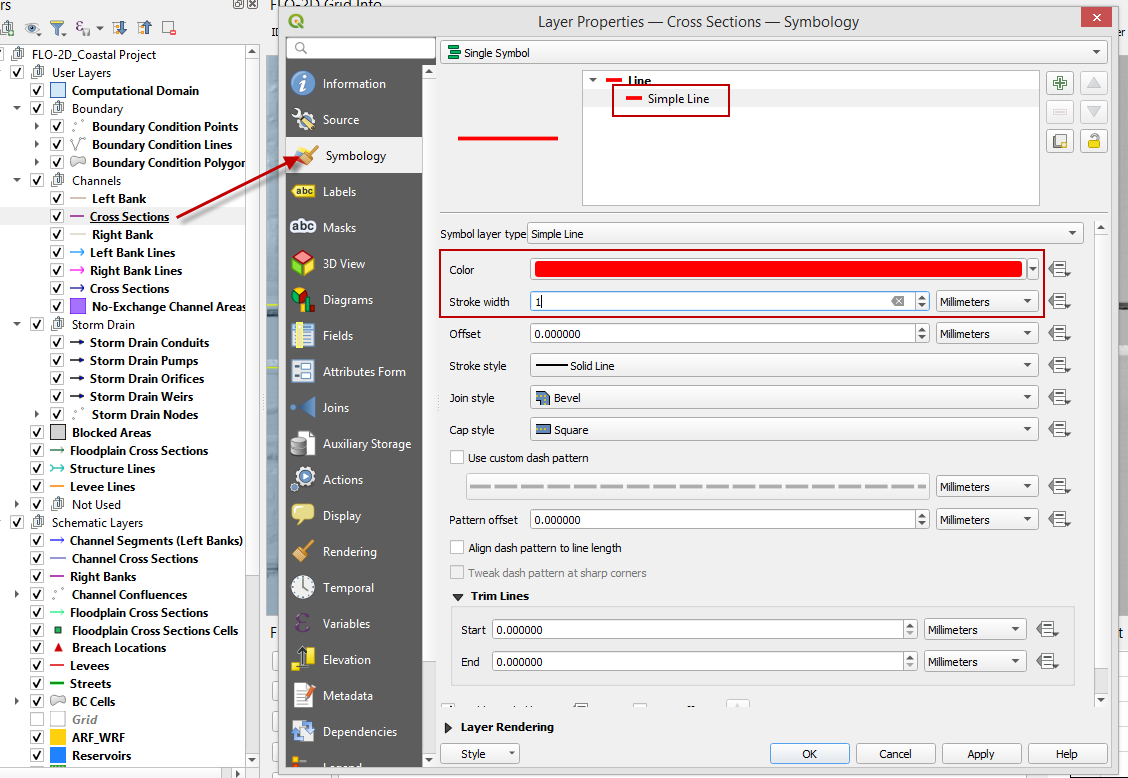
Click Symbology and Click Simple Line. Set the color to red and the stroke width to 1. Click OK to close the window.
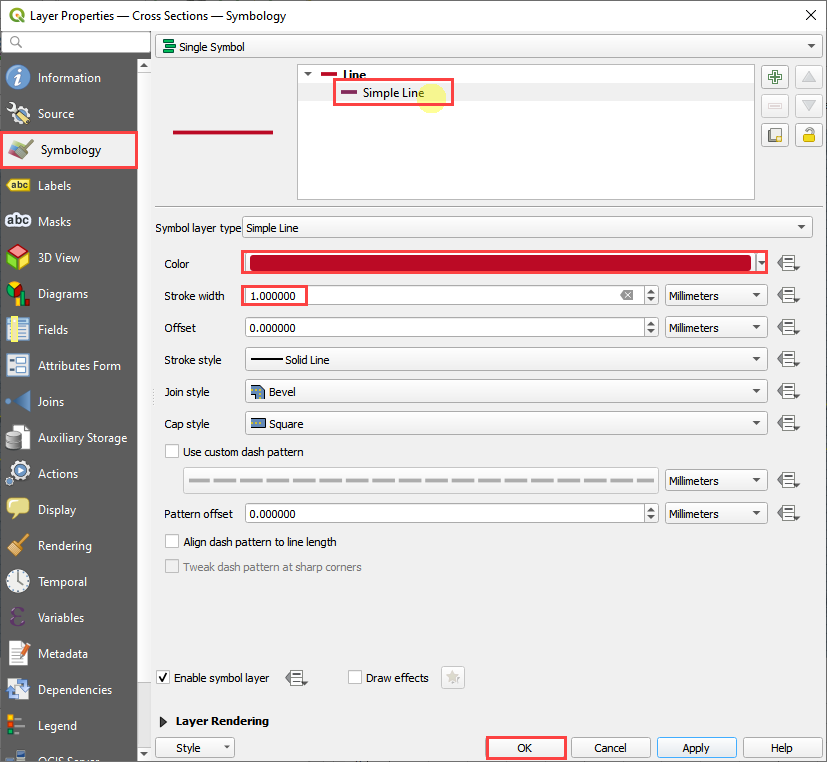
Add the Snapping toolbar. Right click the toolbar area and check the Snapping toolbar.
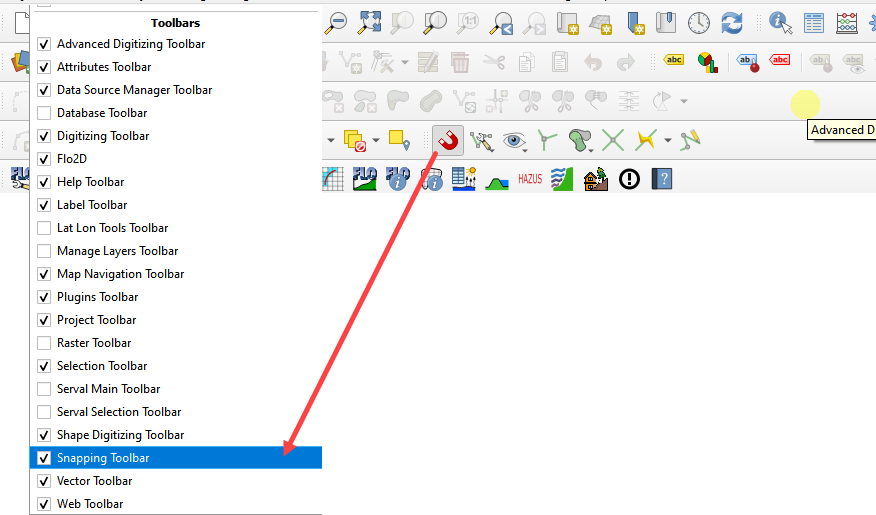
Click the Config button and set it to Advanced Configuration.
Click the eye button and set the active layer to Cross Sections.
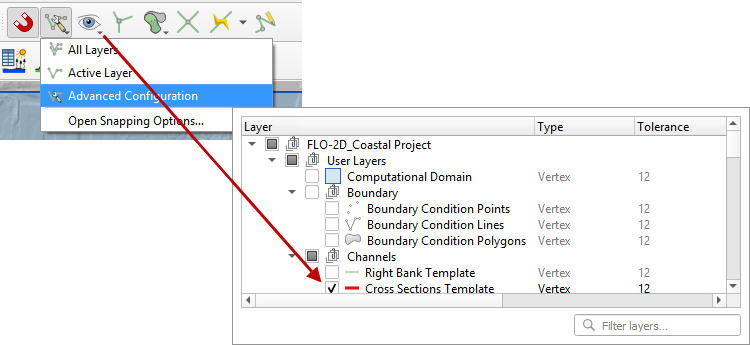
Collapse the FLO-2D widgets and click Cross Sections Editor.
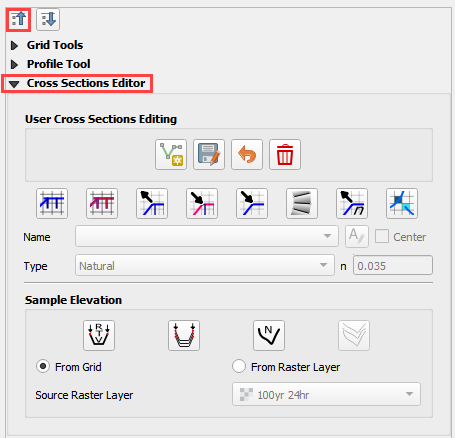
The first cross section has important restrictions.
The line must cross the left bank line.
The line must start in the same cell as the left bank line.
The line must cross the right bank line.
The line must start in the same cell as the right bank line.
Click the Add Cross Section Lines button on the Cross Section Editor.
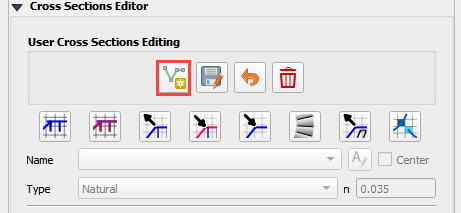
Digitize all 24 cross sections using process shown the following animation. Use the red lines as guides.
Left click the south side (left bank).
Left click the north side (right bank).
Right click to close the line.
Click OK or use the Enter key to close attributes window.

Handy digitizing tools:
Left click to drop a point. Right click to close a polyline or polygon.
Rotate the scroll wheel to zoom in and out.
Click and hold the scroll wheel to pan while in editing mode.
Use the delete key to delete the last vertex created.
Use the Esc key to cancel the polyline or polygon.
The point won’t drop until the mouse button is released.
Redo and undo have limited functionality and can be useful. Ctrl-z to undo.
Once the last cross section is complete. Click the Save icon on the Cross Sections Editor.
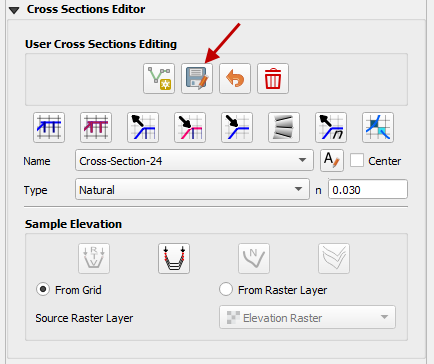
Remove the channel templates from the layers list. Right click them and click Remove.
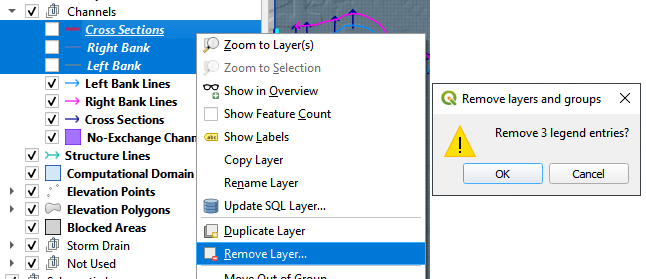
The final cross sections should look like something like this:

Step 6. Cross section attributes#
The widget can be used to edit the attributes of the cross sections but that method is slow. Sometimes it is faster to use the attribute table editor.
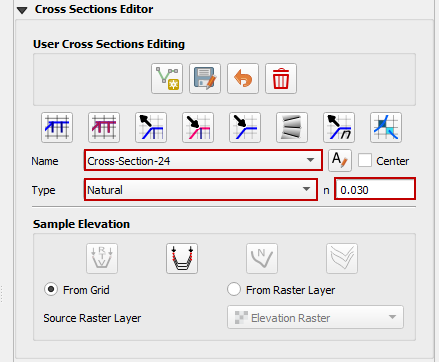
Go to the User layers group. Right click the Cross Sections layer and click Open Attribute Table.
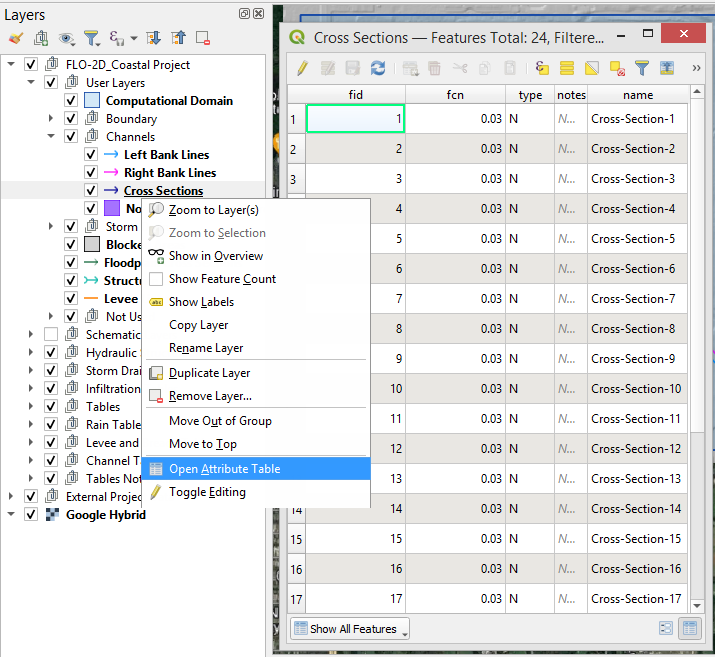
Click the Edit pencil.
Set the field to fcn.
Set the n value to 0.035.
Click Update All.
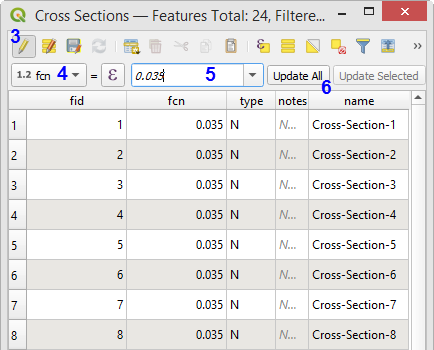
Click Save button
Un-toggle the editor pencil.
Close the table.
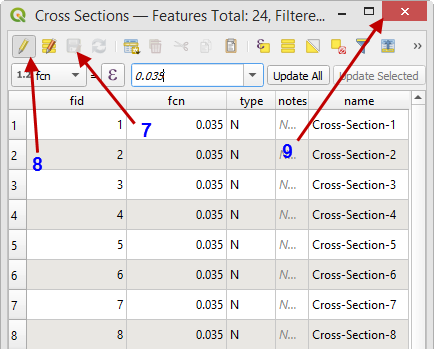
Step 7: Load cross section data#
Important
The video discusses cross section development. Methods to determine the urban channel geometry.
As-built files are the first source of data but not available in all cases.
Survey channel cross sections.
Sample elevation data from a LiDAR raster. (This method only works if the channels are dry.)
Measure and estimate channel geometry with QGIS tools.
From the Cross Section Editor, choose Cross-Section-1.
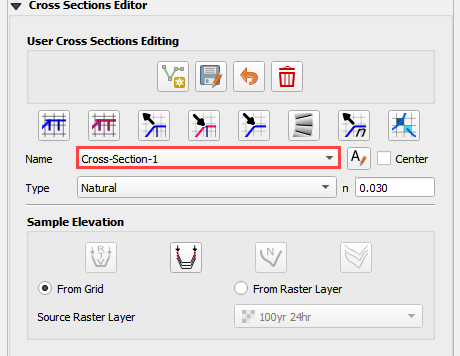
Open the corresponding cross section text file.
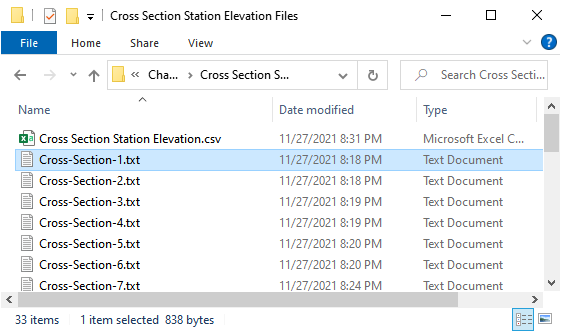
Data Location: \Coastal 2D Training\Project Data\Channel\Cross Section Station Elevation Files
Copy the data and close the text file. Tip: Hold down the Ctrl key and press A C W keys.

Click the first cell of the of the FLO-2D Table Editor and click the Paste button.
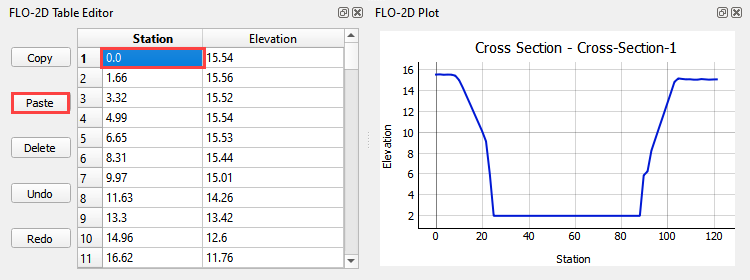
Repeat this process for all 24 cross sections.
Use the mouse roller to scroll through each cross section to see that it has correct data.
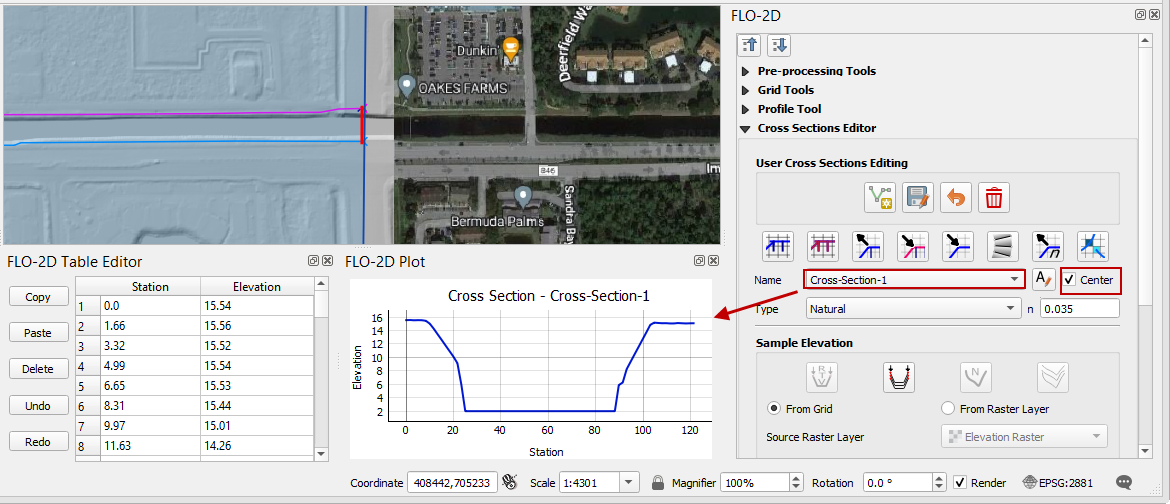
Step 8: Schematize channel#
Note
If any of the following procedure needs to be repeated, always return to this Schematize step to reset the data before trying to modify anything. It is a reset button and it is very important.
Click Schematize channel.
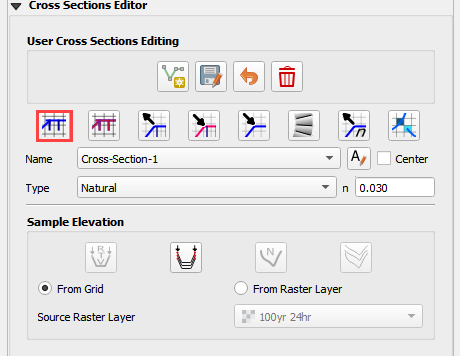
If the channel schematizing process was successful, the following messages will appear. Click Yes and Close.
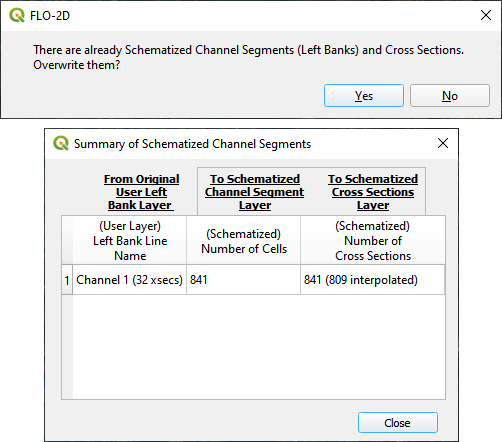
If an error message appears. Ask the instructor for help.
Step 9: Review bank alignment#
Channel alignment in urban projects can be important because channels are usually squeezed between features like buildings, walls, and streets. In this image, the right bank right along the houses. Recheck the banks after adding buildings.

It is simple to make minor corrections to the left bank lines, right bank lines, and cross sections to realign the channels.
In the User Layers group, turn on the Editor Pencil for Left Bank Lines, Right Bank Lines, and Cross Sections.

Set the Vertex Tool to All Layers.

Reposition the left or right bank so that it is better aligned with the right side of the channel.
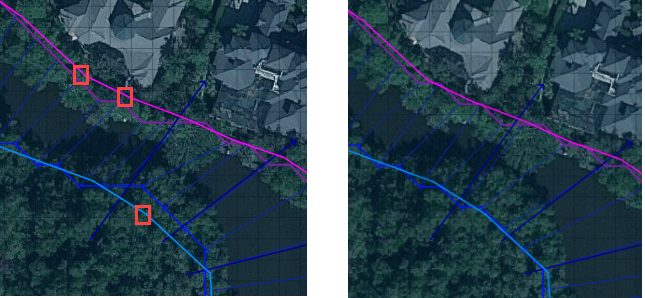
Click the Schematize button to adjust the Schematized Channel layers. Click Yes and Close to close the windows. In This case, hitting the enter button twice will be faster.

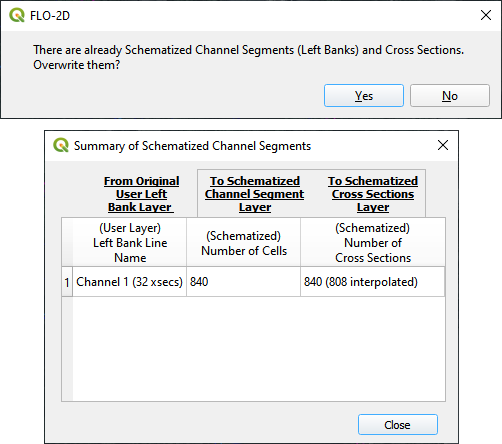
Always finish by clicking the schematize button to ensure the final edits were updated.
Once the final edits are complete, save and close the editors for the User Layers.
Step 10: Interpolate the channel#
N type channels are interpolated using the Interpolator.exe program. This method will outline how to call the interpolator and reload the data.
Note
If this process needs to be repeated for any reason, click Schematize button before performing this step.
Click the Create CHAN.DAT, XSEC.DAT, AND CHANBANK.DAT button.

Select the folder where the *.DAT files will be saved.
Data Location: \Coastal 2D Training\Project Data\Channel Interpolate Test
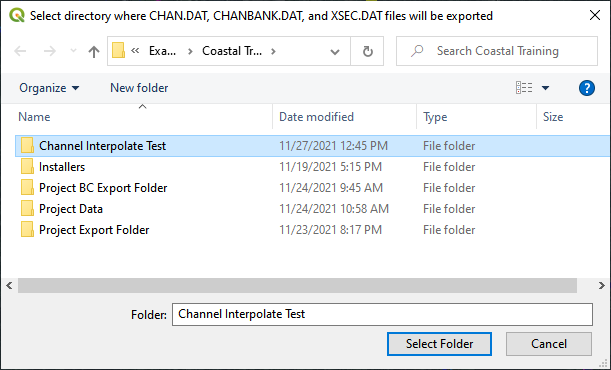
The first action saves the channel data. Click OK to close the message.

The second action calls the Interpolate.exe program from the FLO-2D Pro folder. Click Interpolate.

If the interpolation is performed correctly the following message will appear. Click Import CHAN.DAT and XSEC.DAT to update the channel data in QGIS.
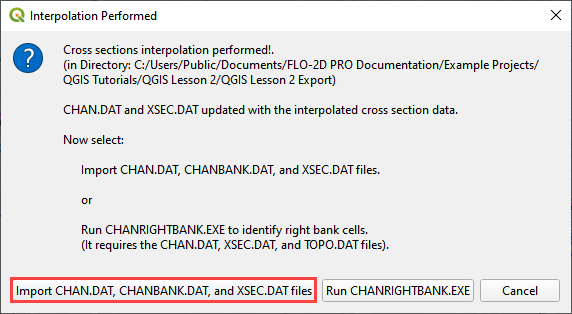
Click the OK icon when the process is finished.

The channel is now complete. The data will be saved to the CHAN.DAT, CHANBANK.DAT, and XSEC.DAT files.
Step 11: Channel boundary condition#
The boundary condition for this channel include a hydrograph at the upstream side and a tide stage control at the downstream side.
Inlet#
Zoom to the first channel element on the southeast corner of the map.

Uncheck the visibility of the User Layers Left Bank Lines, Right Bank Lines, Cross Sections.
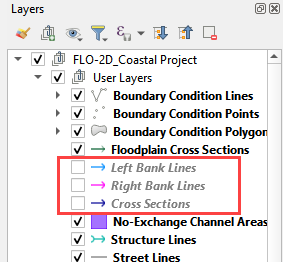
Collapse the FLO-2D Widgets and expand the Boundary Condition Editor.
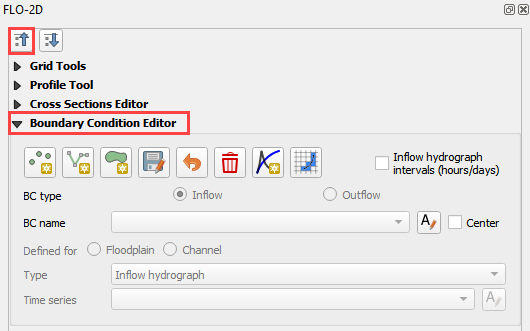
Click the Add point BC button, click the first left bank cell of the channel and click OK.
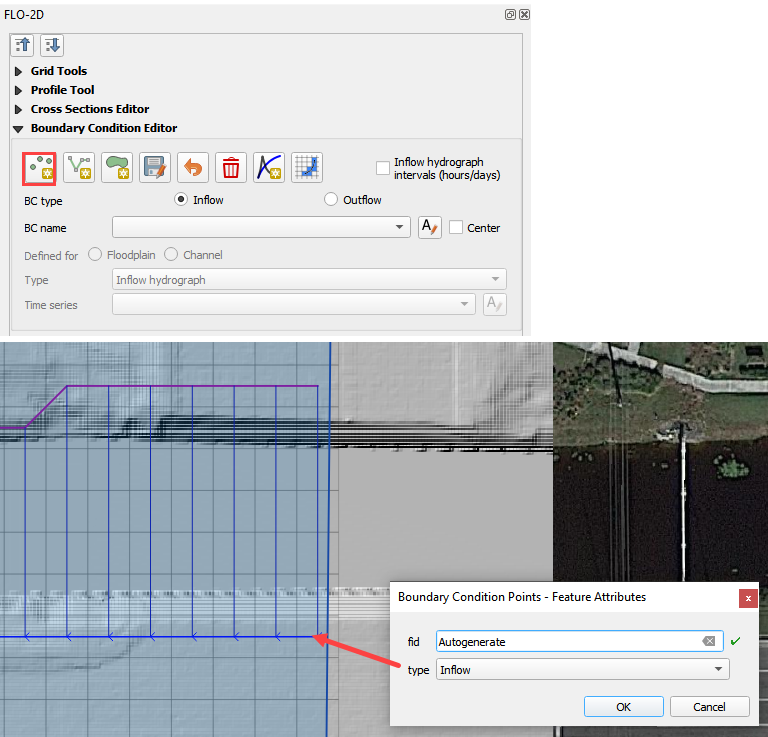
Click Save on the Widget and OK to close the message.
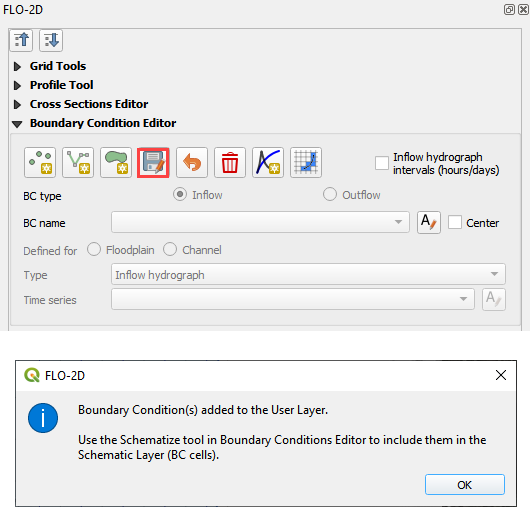
Check the Inflow radio button and change the BC name of the inflow to CocoIn
Set Defined to Channel
Name the new Time Series to 24hr100yr.
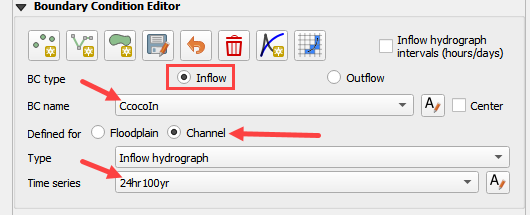
Open the hydrograph file in Notepad and copy the data.
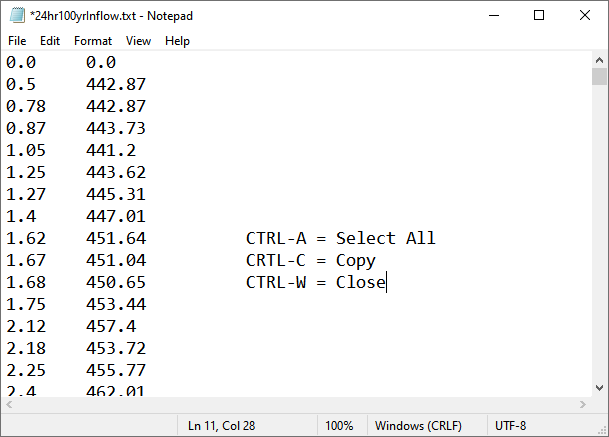
Data Location: \Coastal 2D Training\Project Data\Boundary Conditions\24hr100yrInflow.txt
Place the cursor in the first cell of the Table and click Paste.

Click the Schematize button the boundary conditions and click OK to close the message.

The inflow boundary is now complete. The data will be saved to the INFLOW.DAT file.
Outlet#
Zoom to the end of the channel.
Nothing is required in this location because the channel terminates upstream of the boundary. It will exchange water with the floodplain as the tide goes up and down.
The following image has is an overlay of the last cross section and the tide table.
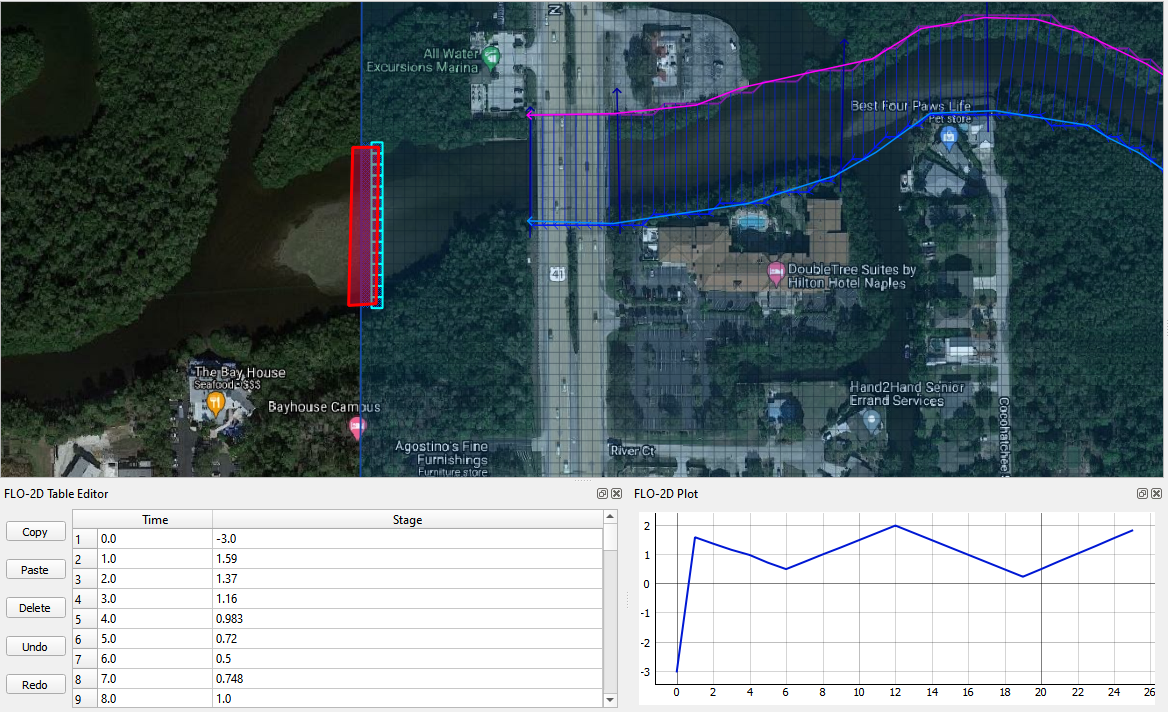
Step 12: Test Run#
Important
The video shows how to find and fix channel errors but the class project will run without errors. Review the video if you have time but skip it if you don’t.
The test run will help determine if the channel is set up correctly. There are a handful of common errors with channel modeling. This video will show how to find and fix these 3 common errors.
Banks too close together.
Boundary cross sections are too high. Invert elevations do not allow downstream flow.
A bank element is inside the channel.
These are reported in an the file ERROR.CHK. If they exist, the model can’t run.
Set the control Parameters and click save. Turn on the channel switch and turn of the rainfall for this test.
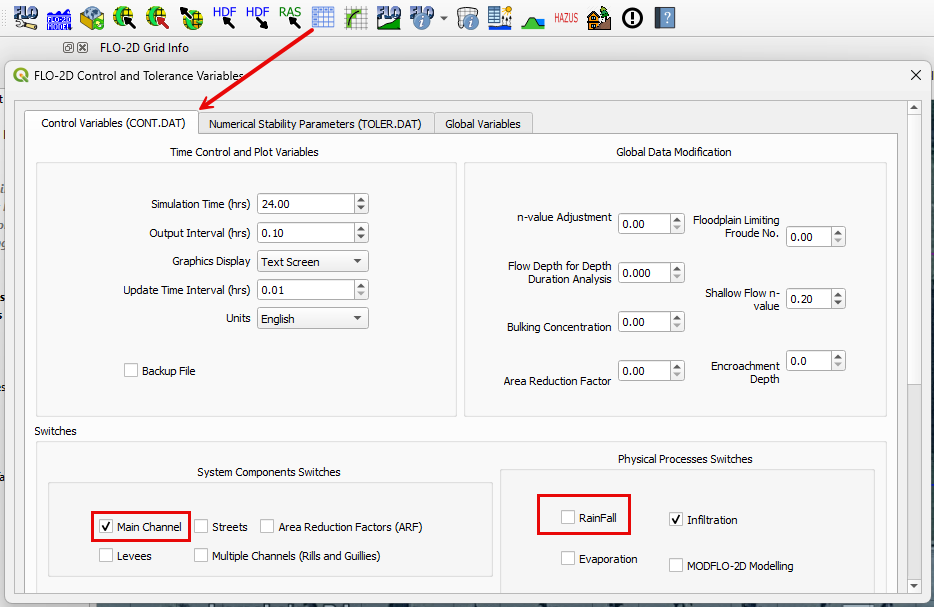
Export the project into the Channel Interpolation Test folder.

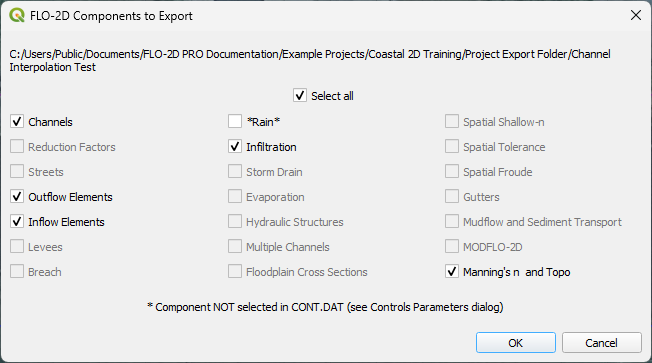
Click the Run FLO-2D Icon.

As anticipated, the error warning appears. Follow the video to see how to review the error.
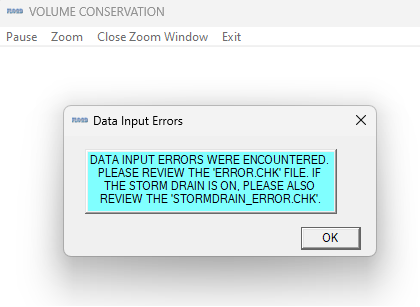
Step 13: Tide gates#
Two gated weirs are in the Cocohatchee channel. Coco1 is further west and Coco2 is close to the east boundary.

Zoom the map to Coco1.
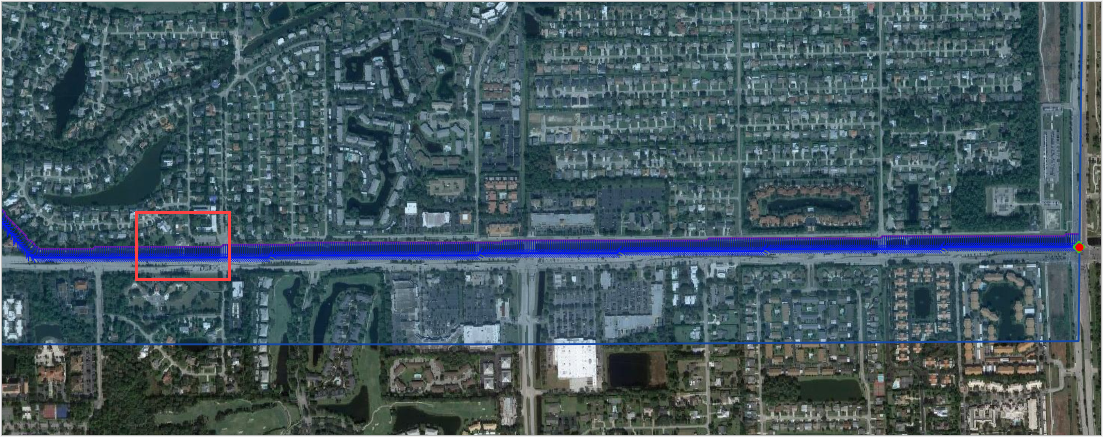
Collapse the FLO-2D widgets and click Structures Editor.

Digitize the first culvert.
Click the Create Structure button.
Click the upstream left bank element.
Click the downstream left bank element.
Right click to close the line.
Click OK to close the feature attributes.

Move upstream to the Coco2 and create the second structure.
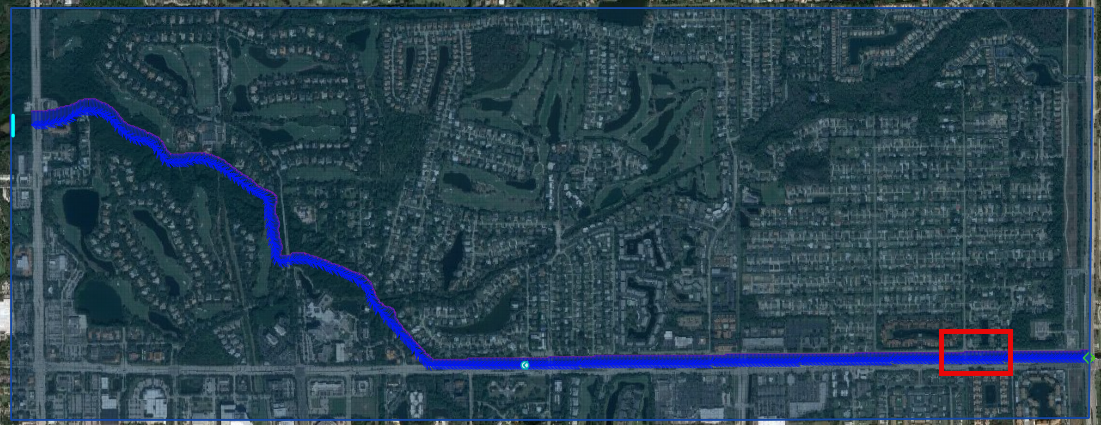
Note
Roll the wheel to zoom. Use the Arrow Keys or click and drag the wheel to pan.
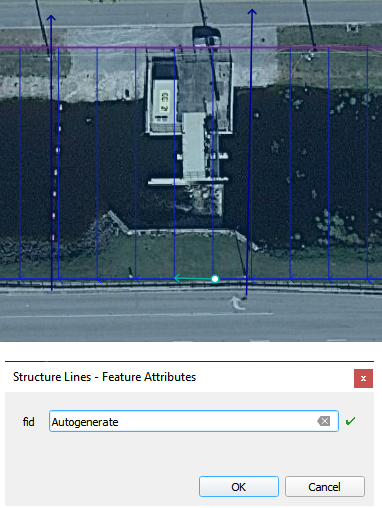
Finish the structures in the Structure Editor widget.
Coco1
Save the Structures.
Click the center button
Select Structure1 and change the name. Coco1
Type = Channel
Rating = Rating table
Tailwater condition is Allow Upstream Flow.
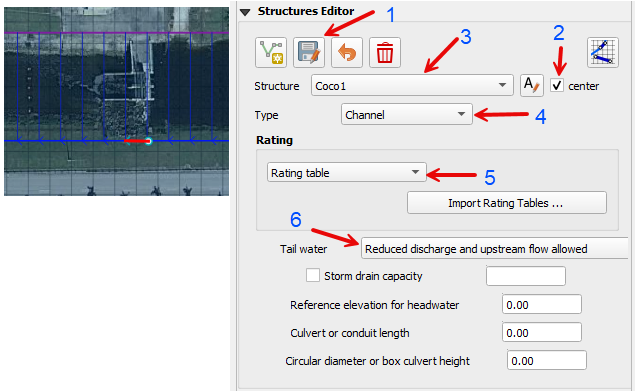
Coco2
Select Structure2 and change the name. Coco2
Type = Channel
Rating = Rating table
Tailwater condition is Allow Upstream Flow.
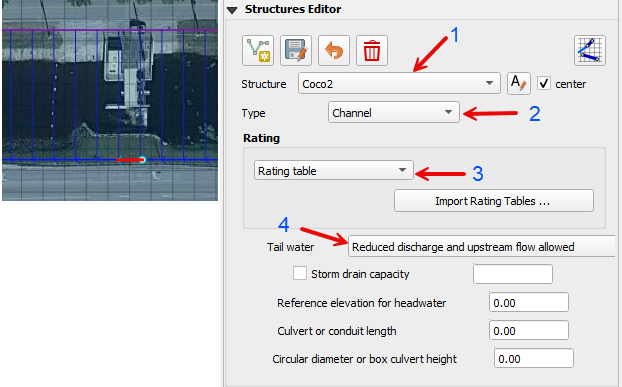
Click the Import Rating Tables button
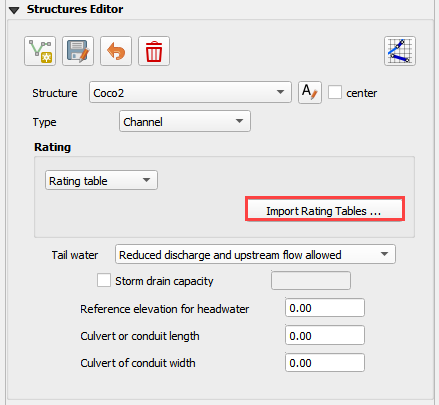
Navigate to the Rating Tables files, select both tables and click Open.
Data Location: Coastal 2D Training\Project Data\Weirs
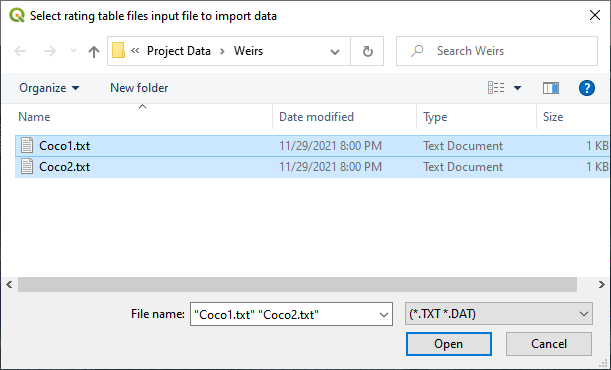
The data was loaded into the FLO-2D Table Editor for the active structure.
Important
It may not be obvious that the data as imported. Select a structure in the widget to refresh the plot.

Click Schematize to write the data to the schematic layers.
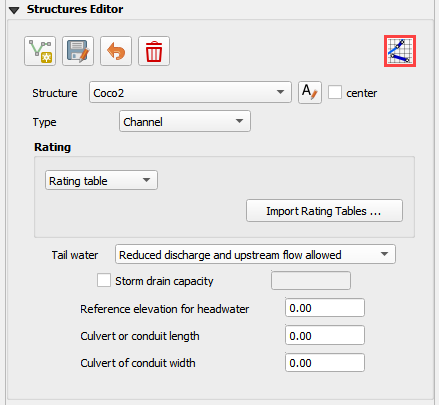
The hydraulic structures are now ready. The data will be saved to the HYSTRUCT.DAT file.
Step 14: Export the project#
Click the Setup Control Parameters icon.

Check the boxes for Main Channel, Rainfall, and Hydraulic Structures and click Save.
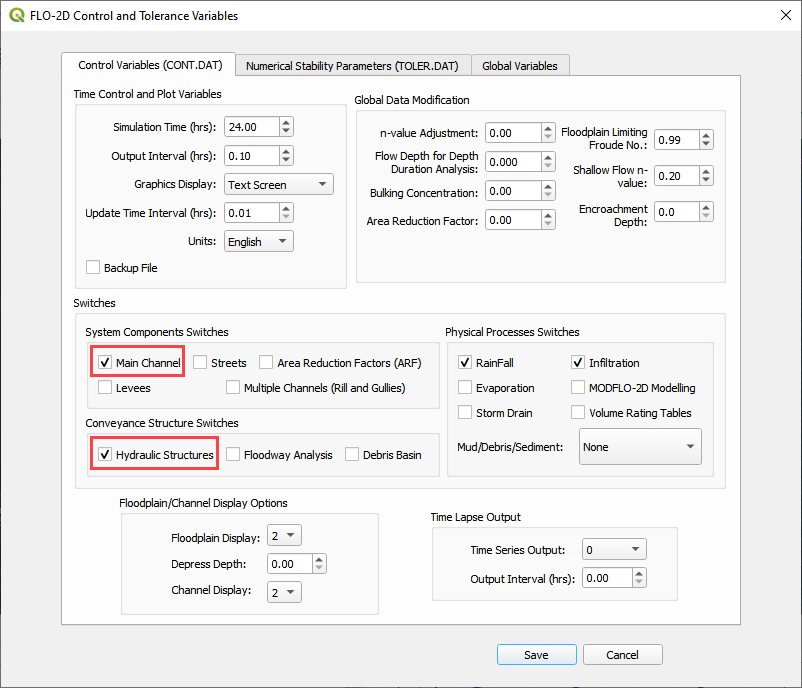
Click the Export button for the FLO-2D Data files.

Create a new Export folder to test the weirs and channel hydraulics.
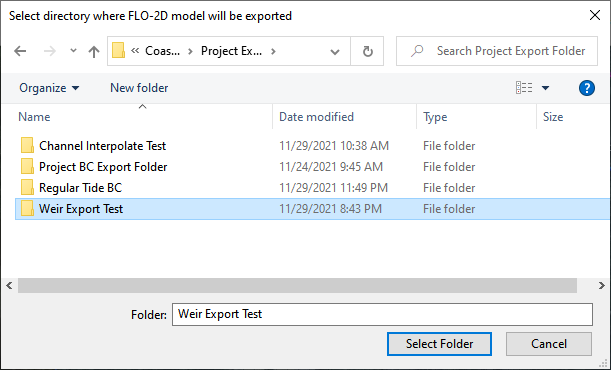
Click OK to to export the data.

Click OK again to close the message. The project is ready to run.
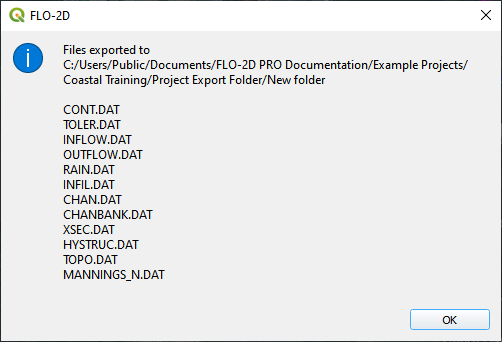
Step 15: Run the simulation#
Click the Run FLO-2D Icon.

The model should start with no error messages. If you see an error message. Check ERROR.CHK. Ask for help from an instructor or by email.

This is a good point to save project.
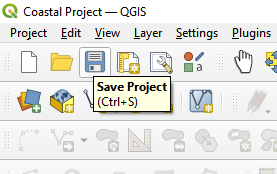
Step 16: Create a backup file#
Close QGIS.
Open the project folder. Select the Coastal Project.gpkg and Coastal Project.qgz files. Right click them and click Sent to/Compressed (zipped) folder.
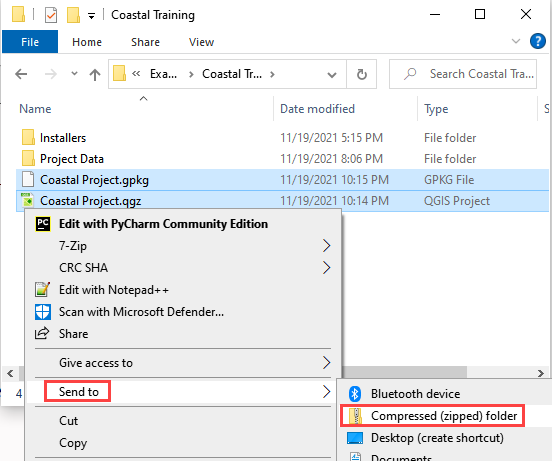
Name the zipped file. It is good to choose a name that identifies project progress. For Example: ChanOK.zip
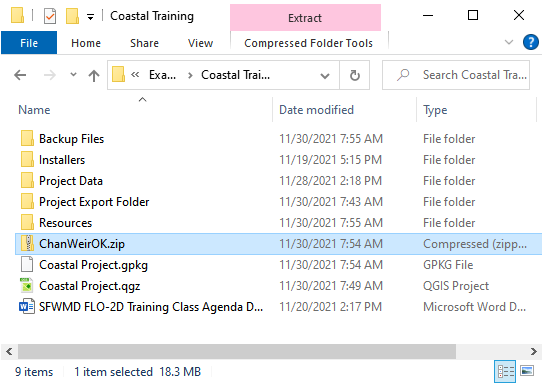
Open QGIS and reload the project.
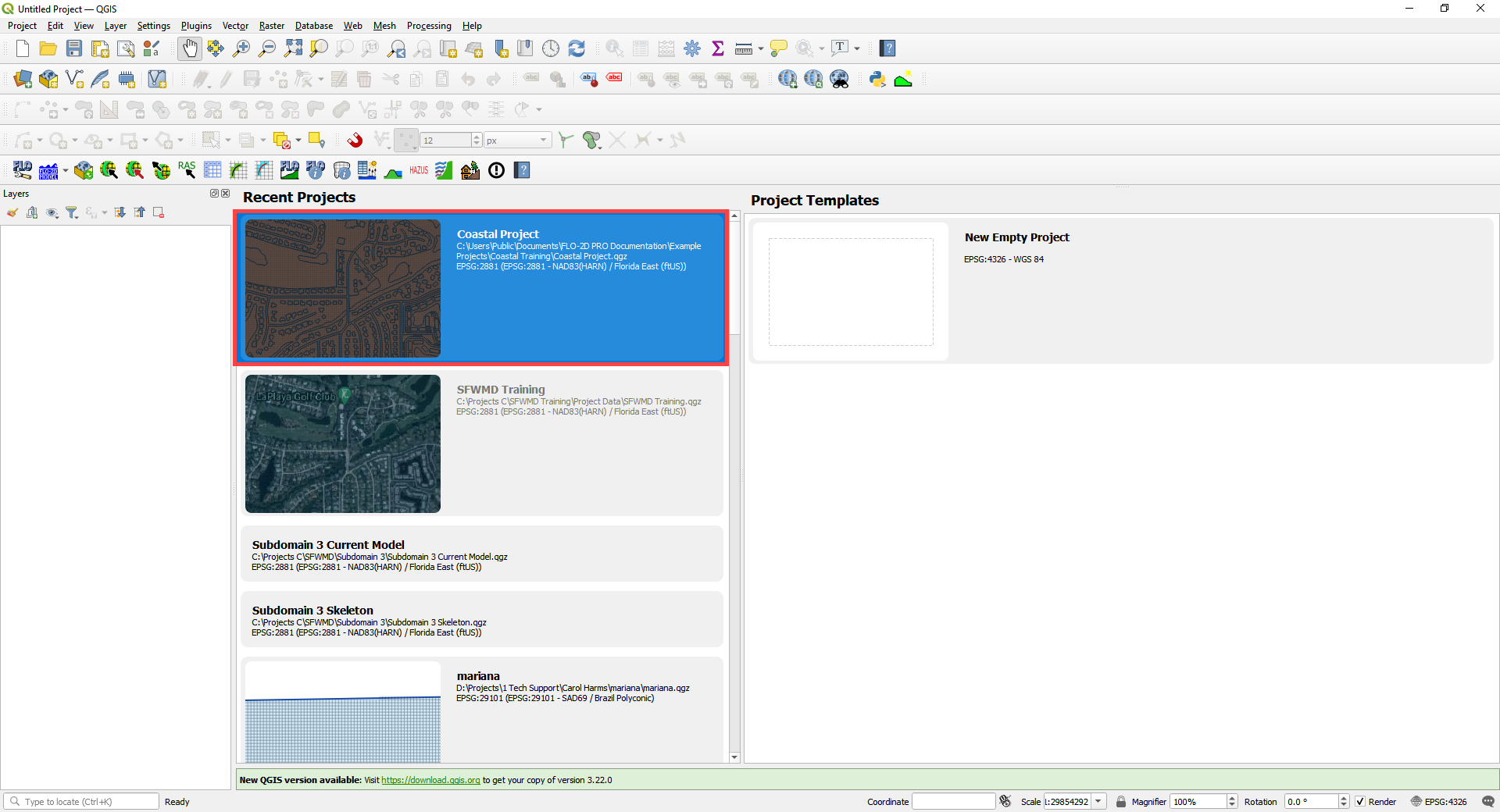
Click yes to load the model.
Important
The following video is a little old but it is still a good channel review. Use it but ignore references to QGIS 3.18. This tutorial uses QGIS 3.28.11 or so.
